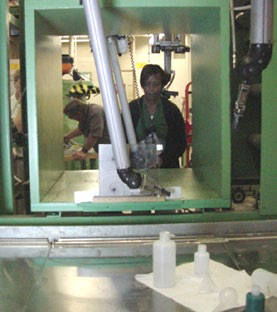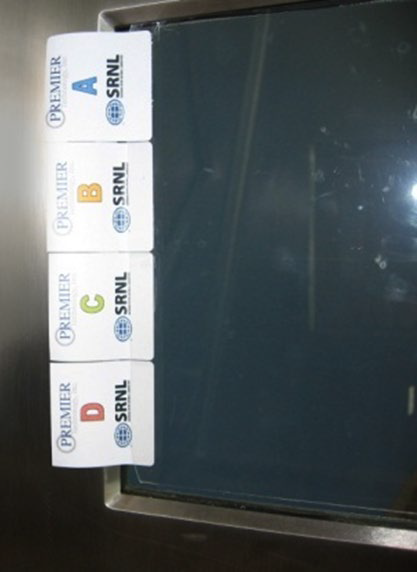Tech Briefs
Savannah River National Laboratory
ProTec Tearoffs™ Protective Barriers
Researchers at the Savannah River National Laboratory (SRNL) have developed a multi-layered tear off system to serve as a protective barrier applicable to areas that require visual assess that ultimately becomes distorted due to accidental scratching, spills/splashes of acids or sludge or radiation damage.
Background
The current mitigation technique used in shielded cells is to place a rigid, monolithic sheet of Lexan in front of the glass window as a protective barrier. Over time, visual clarity of the Lexan deteriorates (due to accidental scratching with the manipulators, spills/splatters, or radiation damage) resulting in the replacement of the Lexan sheet. Similar degradation occurs on glovebox or hood sash windows where complete replacement of the window is typically required to regain visual clarity. Replacement requires bulk waste disposal which can be time-consuming and costly.

At a glance
- Reduces systems downtime
- Cost effective
- Reduces waste volumes
- Protects surfaces
- Reduces personnel exposure
- Ability to customize size
- Easily removable
- Proven results
- UK No. 245899 patent issued
- U. S. patent applied for
How it works
The ProTec Tearoffs™ system is the use of thin, multi-layered sheets of Mylar which are applied to serve as a “secondary” (or primary) barrier. Upon degradation of visual clarity due to accidental scratching, spills/splatters, and/or acid/radiation damage, the outer single sheet of Mylar is to be removed “refreshing” or restoring the view. The removal of the outer layer not only regains visual clarity but also provides the “next layer” of protection” due to the multi-layers concept. Potential uses include but are not limited to fumehoods, shielded cell windows, glovebox windows, radiochemical hood sash windows, chemical hood sash windows, and any surface that warrants protection against acid, base, radiation, or physical damage.

Partnering Opportunities
SRNL invites interested companies with proven capabilities in this area of expertise to develop commercial applications for this process or product under a cooperative research and development agreement or licensing agreement. Interested companies will be requested to submit a business plan setting forth company qualifications, strategies, activities, and milestones for commercializing this invention. Qualifications should include past experience at bringing similar products to market, reasonable schedule for product launch, sufficient manufacturing capacity, established distribution networks, and evidence of sufficient financial resources for product development and launch.
Download Tech Brief
Contact Information
Savannah River National Laboratory
E-mail: partnerships@srnl.doe.gov